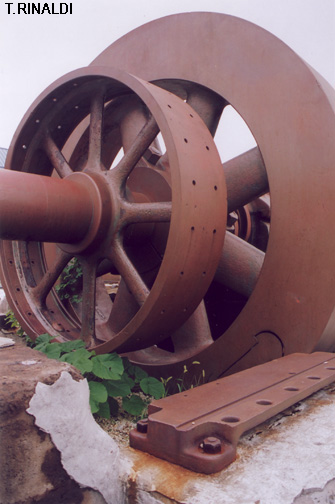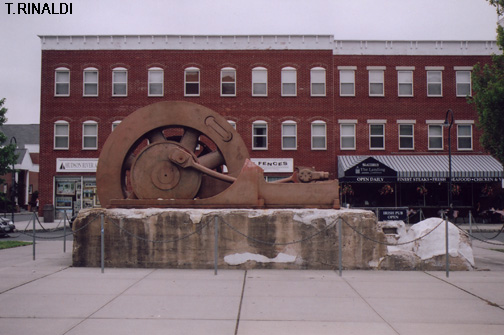P I E R M O N T PIERMONT is situated on the Hudson's western shore, just a few miles above New York's border with New Jersey in Rockland County. In the past thirty years Piermont has gone from being a down-at-the-heels old factory town to a popular weekend getaway for many New Yorkers, known for its quiet strip of intact nineteenth century storefronts. When street parking runs out, the overflow finds its way to several big parking lots situated just east of the village, where an old steam engine lies somewhat awkwardly stranded in the shadow of faux-Victorian facades that are well-intended if not altogether convincing. Turns out this unmarked artifact is all that remains of a massive paper mill that stood here for most of the twentieth century. Today the old factory buildings have been replaced by imitation nineteenth century storefronts, and this rusting relic seems to have been left behind more because it was too much trouble to haul away than because someone wanted to remind us of what used to be here. Intentionally or not, it is a fitting memorial to fallen brick walls. PIERMONT takes its name from the mile-long jetty built here as the eastern terminus of the Erie Railroad in the early 1840s. Later the railroad moved its faciilities further south, to Jersey City. The paper mill came in 1902, when the Piermont Paper Company built a long, rambling complex of brick factory buildings where the pier met the shoreline. The plant produced folding paper cartons. The Robert Gair paper company bought the factory around 1920, and continued to operate here until it merged with the Continental Can Company in 1956. The mill passed to the Federal Paper Board Company in the early 1970s, and then to the Clevepak company before finally closing in 1982.
Piermont's Paper Mill prior to demolition. (New York Times, Feb. 20 1983) WITHIN a few years of its closure, developers razed the plant to make way for new condominium developments. This marked the beginning of what soon became a trend, especially here on the lower Hudson, of the almost wanton, wholesale demolition of historic, attractive, re-useable industrial buidlings and the construction in their place of high end residential buildings that pay little tribute to the history they displace. Two decades later this trend has left only scattered bits and pieces of the buildings that once characterized the shoreline of the lower Hudson. No one misses the destructive pollution that once came from these sites (Piermont's paper mill was a notorious offender). But some of us miss the old buildings themselves, the architecture that defined the waterfront for generations. © T.E. Rinaldi, 2006
|


